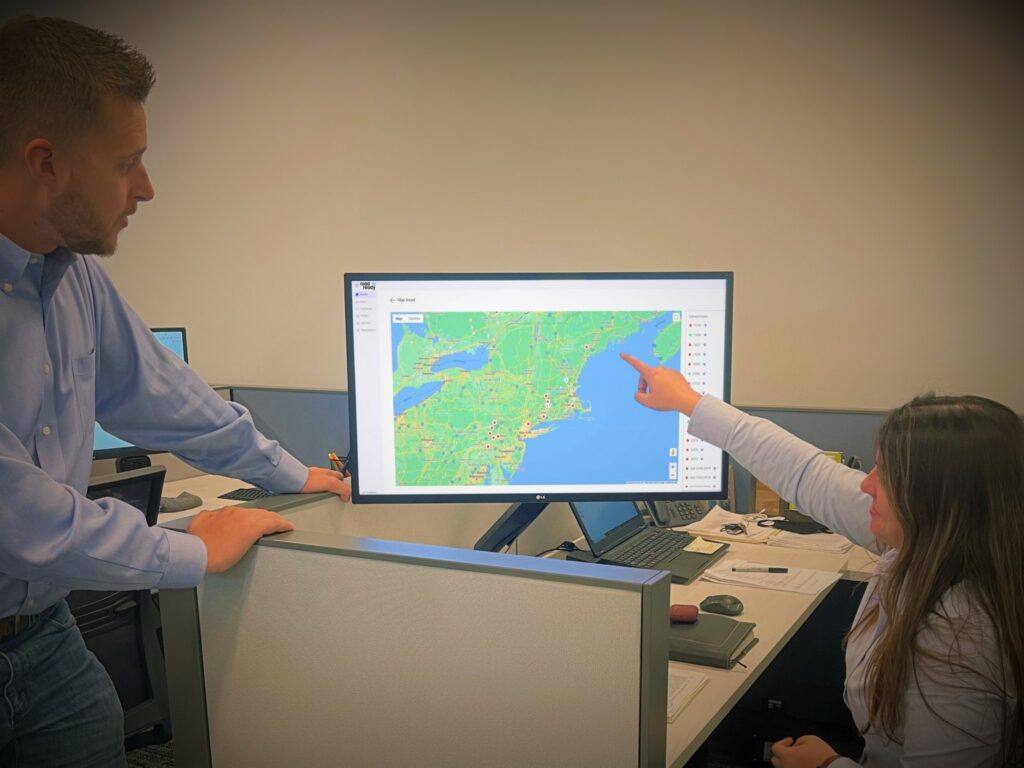How AI is transforming telematics
Artificial intelligence (AI) is one of the hottest topics of the year. But in trucking, and more specifically telematics, is it a buzzword, a passing fad, or something more? And what even is AI, anyway? Can an inanimate object, say a camera, really be intelligent?
Nada Jiddou, executive vice-president and chief digital officer with Clarience Technologies, explained that AI works similarly to the human brain to help make decisions faster and maybe even more accurately than a human.

“Our brain works by taking in multisensory data, then processes that data, it categorizes it, translates it, then stores it and retains it. It then recalls it later to process new information,” she explained. “Based on that contextual data that it has stored prior, it can make future decisions. AI doesn’t work much differently.”
In the past, sensors in a dash cam may detect a harsh brake application and send a notification to a safety manager. Mayank Sharma, head of global product management and UX at Teletrac Navman, said AI-enabled cameras can decide whether or not the hard braking incident was necessary, and if it was – say a driver was cut off and had no alternative but to apply the brakes hard – it may choose not to notify that safety manager.
“Did that happen because you were going too fast, or did the other driver cut in front of you? Being able to detect scenarios like that is what AI enables,” Sharma said.
The same applies for driver-facing cameras. AI algorithms will be able to detect factors such as driver fatigue based on the driver’s reactions or the rate at which they blink their eyes. It can then warn a fatigued driver to pull over for a break before a wreck occurs.
“A lot of providers out there just record a bunch of video and then the burden is on the customer to understand what the video actually tells them, and nobody has time to do that,” Sharma said. “AI can actually help bring out the more salient video clips that you want to see.”
This is useful for fleet managers or safety managers who find themselves inundated with data, not sure where to focus their limited resources.
“We are surfacing anomalies or outliers in the data,” Sharma said. “So, you’re not having to worry about every piece of data that might be getting collected, or every piece of video. In the past, we’d collect the data and it would go into some sort of a report. Now we are able to run an AI algorithm on that data to pick out the outliers and anomalies in the data set.”
In the simplest of terms, Jiddou said, AI is “really taking the data and making it useful and being able to apply it in day-to-day business operations.”
Rahat Yasir is director of data science and AI/ML at Isaac Instruments. He explained AI is an umbrella term under which sit machine learning, data science, computer vision and deep learning. “AI is a type of computer program that can emulate human-like cognitive capabilities like anomaly detection of language processing or speech recognition or computer vision,” he explained.
In order for AI to be useful for a fleet, it must address a problem and have a use case. “If there is no use case backing that buzzword, then it’s just a buzzword,” Yasir said.
Isaac Instruments is looking to AI to help improve drivers’ lives, as quality of life could help address a very real problem – the struggle to find and retain quality drivers. “We are looking at terabytes of data trying to find patterns. One of the problems we’re looking at is, how can we make the life a driver better,” he explained. “How can we address those struggles?”
Predicting arrival times
Clarience Technologies recently worked with a fleet to use AI to better predict truck arrival times, beyond GPS tracking.
“We could actually predict arrival times of assets at a certain location,” Jiddou explained. “We worked with the customer to actually validate that those assets did get to that location at that given point of time. We validated it and were able to get it to about a 99% accuracy.”
This even took into account hard-to-predict factors such as weather and with that intelligence the fleet was able to better optimize routing or plan scheduled maintenance. “Today, most of the use cases for telematics we’ve seen is to do mostly with route optimization and to some extent, scheduling. What I can see happening over time as theses fleets start to get more sophisticated is they’ll take this data they’re collecting above and beyond location data and start to put more context around it, to be able to run their businesses more efficiently.”
An example would be better predicting the total cost of operation for any given asset, “so they know the minute they onboard an asset into their fleet, how much that asset is going to cost them over the lifetime of it,” Jiddou said.
Fleets will be able to better manage their capacity and plan maintenance events. “We still have a ways to go for all of that and it will require investments from these fleets but the time is now. The technology’s getting there, the processing power is available and it’s starting to get cheaper.”
Identifying idle time
Another practical use case identified by Isaac’s Yasir is detecting anomalies that may be costing the fleet money, such as excessive equipment idle time. Perhaps it’s normal at Christmas time for 30% of a fleet’s tractors to be parked, but that number jumps to 45% in a particular year. AI will detect the anomaly and alert the fleet manager so action can be taken if necessary.
“This is the value of the data we are trying to bring,” Yasir said.
Fleets that are early adopters of AI will get the biggest benefit when they can take the intelligence and data generated by disparate systems and combine them. This is what Clarience is doing through its Fus1on platform.
“One of the biggest challenges fleets have today is the fragmentation of the systems that they have,” Jiddou said. “You go into a leasing fleet and they have a lease management solution, which has an inspection solution, they have a maintenance package. They don’t talk to each other. Fus1on comes in and glues all of these systems together.”
The use of AI in telematics also carries with it the obligation to use the technology responsibly, Yasir pointed out. For instance, any AI algos must strip out references to gender, age or ethnicity so everyone is treated fairly. Jiddou added there should be limits placed on how much trust fleets put into the data an AI engine generates. It won’t always be perfect initially and must be verified.
“Trust it to an extent,” she said, “but always verify the use case against something that’s very known to you as a business.”

Have your say
This is a moderated forum. Comments will no longer be published unless they are accompanied by a first and last name and a verifiable email address. (Today's Trucking will not publish or share the email address.) Profane language and content deemed to be libelous, racist, or threatening in nature will not be published under any circumstances.